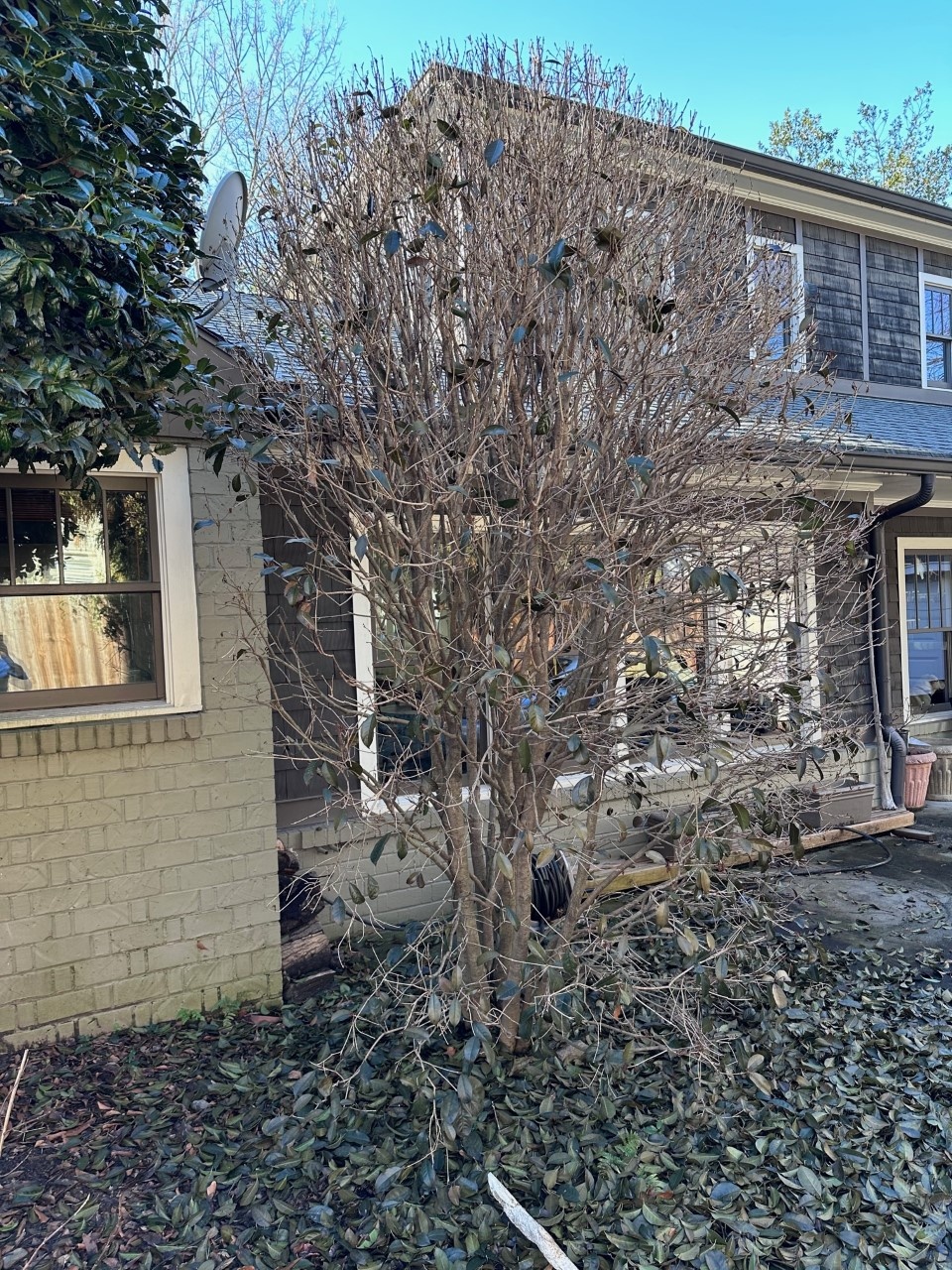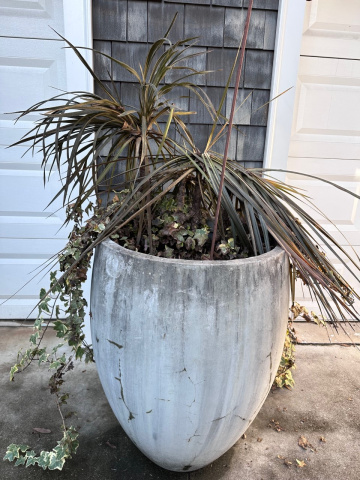Cold Snap Takes Toll on Plants

Updated Jan. 23, 2024
The recent days of below-freezing temperatures showed little mercy on plants and shrubs, leaving many severely battered and in some cases dead. Now, gardeners are assessing the landscape and determining what to do.
“First, I would remove anything that is clearly dead,” said Steve Place, campus sustainability program manager in the Office of Sustainability. This advice applies to herbaceous plants — those with no woody stems above ground — including many perennials and nearly all annuals and biennials. Those plants are not coming back, so it’s OK to discard them.
But perennials with a woody stem, like hydrangeas, require a different approach.
“Hydrangeas flower on old wood, so even if they look dead, leave them alone,” Place said. Neil Fuller, associate director of Landscape Services in Infrastructure and Sustainability, agrees. Because plants are mostly dormant this time of year, it will be hard to tell what the overall damage is until they start pushing new growth.
“Unless there is obvious structural damage, such as major broken limbs or huge cracks, I would not cut anything back just yet,” Fuller said. “Should we get a second run of extreme cold, any heavy pruning now could allow for even more damage. Also, a plant that looks like a goner may be perfectly healthy. So, typically, we reserve hard pruning for the tail end of winter so that when the temperatures start to rise, the plants begin rejuvenating.”
If you are unsure if a branch is damaged, Place suggests scraping it with a clean, sharp blade and looking for green just underneath the bark.
“A small scrape should suffice,” he said. “As the plant flushes back out, more damage may be obvious. At that time, you can conduct a harder and more thorough pruning. The key is to let the plant tell you where it needs to be pruned rather than brutally pruning a plant that is already stressed.”
Bottom line: If you have doubts regarding a plant’s condition, doing nothing will avoid further harm.

